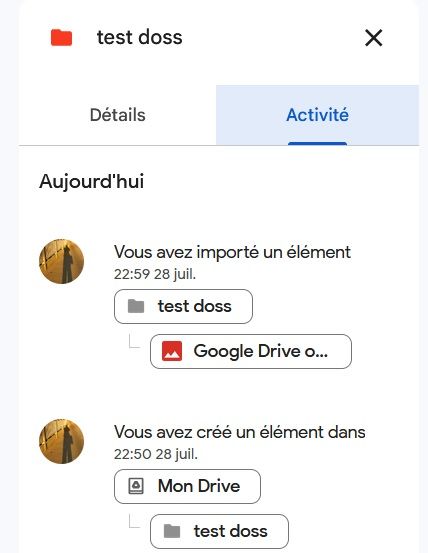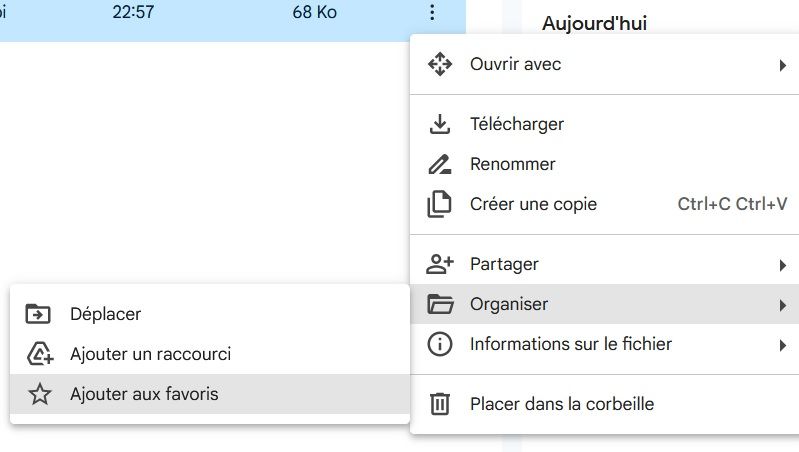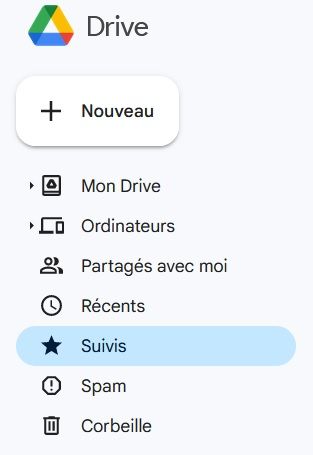Google Drive: how to organize your content in 5 tips


Picture: A9 STUDIO/Shutterstock
My professional activities depend on Google Drive. I use it every day and I go in and out of it from morning to night. Since I spend a lot of time working in this cloud storage service, I found some “tricks” to make my experience more efficient.
Before discussing these useful tips, know that they do not concern the individual applications of Google Drive (Docs, Sheets, Slides and Forms). These tips are about Drive itself and how to get the most out of the platform. Therefore, if you are looking for specific advice on any of the included tools, continue your search. However, if you want to improve your daily work on Drive, you have come to the right place.
That being said, let’s move on to the tips.
1. Organize your folders
It goes without saying, but it is essential to organize your files. If you save everything in the root directory of Google Drive, you will find yourself in a real mess. Even if you create folders to store documents in them, if these folders are not organized at all, you will spend more time searching for files than using them.
Let’s say, for example, that you work with specific clients or projects. You could create a folder for client A, client B, client C and client D, or for project 1, project 2, project 3 and project 4. If you work with both clients and projects, you can create a folder called CLIENTS and another called PROJECTS, and then create subfolders called Client A, Client B, Client C, Client D, etc.
Here is how I set up my Google Drive hierarchy:
Customer > Year > Month.
Thus, I could have Client A > 2022 > July. In the July folder, I add all my contents/documents/etc. for this month. Thanks to this layout, it’s incredibly easy to find out where everything is in Drive without having to think about it.
2. Use a color code for your folders
To simplify the folder hierarchy, I assign a color code to each client folder, so that I just have to search for the color instead of the name. To assign a color code to a folder, right-click on the folder in Google Drive and select Organize then choose the desired color from the palette.

Changed the color of my ZDNET folder in Google Drive.
Capture ZDNet France
3. Use the activity sidebar
Since I use Google Drive a lot, sometimes I need to quickly access a document that I recently worked with in a folder. Let’s say I’ve written an article for ZDNET and I need to quickly check something in the document. If I open Google Drive and select the ZDNET folder, the activity pane toggles and only shows the recent activity associated with that folder.

The recent activity in a specific folder.
Capture ZDNet France
I can click on any of these documents to quickly open it and do what I need to do.
4. Use the Favorites function to quickly access important files and folders.
I have some documents that I need to refer to regularly, but they are scattered throughout the hierarchy of my Google Drive folders. I don’t want to have to search for these documents (because it’s a waste of time). Instead, I can mark these documents with a star: I will just have to go to the stars folder (favorites) to find them.
To mark a document in this way, all you have to do is right-click on the name of the document, then on Organize and on Add to favorites.

The star icon can make it much easier to find a document.
Capture ZDNet France
To access your starred content, all you have to do is click on the Starred entry in the left navigation of Google Drive to display all the documents that you have added to this folder.

The entry marked with a star in the left sidebar of Google Drive.
Capture ZDNet France
5. Use the advanced search tool
Finally, never hesitate to use the advanced search tool. The basic search function of Google Drive is quite powerful in itself, but you have to know exactly how to use it. Of course, you can always use the standard search bar, but you need to know what you are doing. For example, you can search for a PDF file whose name (or content) contains “google drive” using an expression like this:
type:pdf
You can also search for all PDF files created before 2022, which can be done with:
before:2023-01-12 type:pdf
There is also an easier way to perform a detailed search. Instead of learning the formulas of the text search, click on the button Advanced search (the icon on the right edge of the search bar) and, when the pop-up window appears, start refining your search by selecting a file type, an owner, words contained in the file, a name for the file, a location, a modification date, approvals, a share with, and follow-ups.

Google Drive’s advanced search tool makes it easy to search using very specific criteria.
Capture ZDNet France
And there you have it, dear Google Drive users, five very simple tips to implement that will go a long way in making your Google Drive experience exponentially easier.
Source: “ZDNet.com “








